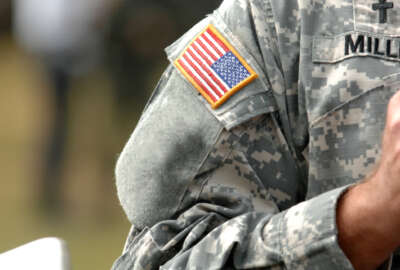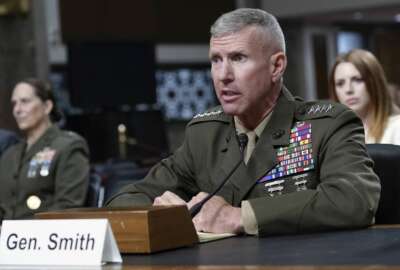DIA marks 50 years of change, amid new ‘golden age’
The Defense Intelligence Agency is now 50 years old, but its current and former leaders say the last 10 have come to define it as an agency.
wfedstaff | June 4, 2015 12:17 pm
Over the past 50 years of the Defense Intelligence Agency’s development, the last 10 have mattered the most, current and former leaders of the agency said at the agency’s anniversary celebration Thursday.
“We used to be a garrisoned agency with some deployments,” said Lt. Gen. Ronald Burgess, DIA’s current director. “DIA today is now a globally-deployed workforce, supported by a headquarters.”
A new ‘golden age’
In 1961, when DIA was first created, the old saw that military intelligence is an oxymoron was truer than ever, at least in terms of the ways in which the Defense Department’s services were collecting, analyzing and disseminating information gathered from the field.
Throughout most of the 1950s, the Army, Navy and Air Force were pretty much doing their own thing on the intelligence front, and often coming up with conflicting conclusions about what the Soviets were doing, according to DIA’s official account of the agency’s early years.
That led President Dwight Eisenhower to worry that he would leave his successor with a “legacy of ashes.” A study group he created eventually recommended a unified intelligence agency for DoD.
“National intelligence and military intelligence are indivisible in practice,” Burgess said at Thursday’s ceremony, quoting from a Joint Chiefs of Staff report issued just prior to the agency’s creation. “This important statement remains just as clear, urgent and relevant on our 50th anniversary.”
James Clapper, the Director of National Intelligence, agreed that the past decade has been what he calls DIA’s “golden age.”
“That’s in no way to minimize the contributions of directors who served before 9/11. One of them was me,” he said. “But 9/11 was a pivotal, epiphany event for all of us. And I think the agency mission has matured and blossomed both as a national intelligence agency and as a combat support agency. Indeed, DoD has literally been at war for that whole 10 years.”
Becoming the war fighters
Tom Wilson, who served as DIA’s director from 1999 through 2002, said the biggest change to DIA over the past decade has been its move to push its workforce into war zones so they could be more directly involved in gathering, analyzing and producing intelligence.
He said the agency used to have small National Intelligence Support Teams of a dozen or so people that would deploy on a limited basis to support military missions. Now though, DIA’s workforce has developed its own war-zone specialties, he said.
“Those are foreign materiel exploitation teams, media exploitation teams, chemical-biological intelligence support teams, human intelligence teams that go forward to support the war fighter,” he said. “DIA has become not just support for the war fighters in the war zone, they are the war fighters in many cases.”
Wilson said another big change over the past decade has been a stronger willingness to share information among intelligence community agencies.
Lowell Jacoby, who succeeded Wilson as DIA director through 2005, said the intelligence community has broken down both the technological and policy barriers that kept secure information sharing from happening before 9/11.
“The commitment up and down the intelligence community leadership and down into the group of people who could make things happen, plus the actual day-to-day implementation was a lot clearer,” he said. “And the results just continue to be magnified.”
Copyright © 2025 Federal News Network. All rights reserved. This website is not intended for users located within the European Economic Area.
Jared Serbu is deputy editor of Federal News Network and reports on the Defense Department’s contracting, legislative, workforce and IT issues.
Follow @jserbuWFED






